Children, especially those in the first year of life, develop the capability for social communication through physical and social interactions with their caregivers (e.g. mothers) and artifacts (e.g. toys). Even neonates have various innate competences to respond to and act on the environment, like those for detecting and tracking human faces, mimicking orofacial behavior (neonatal imitation), and recognizing their mothers' voice in terms of the prosodic features. These competences are, of course, the driving force to interact with the environment; however, in order to be socially meaningful, a child's acts have to be responded to, guided, and given social functions by adults (especially, caregivers).
Let us briefly look at how the social development is initiated and maintained in a supportive environment during the first year of life.
- Under three months of age
The child establishes "eye-contact" with the caregiver along with an exchange of voice and/or facial expressions in the form of rhythmic turn-taking. The temporal structure mainly originates from the caregiver reading the child's response pattern.
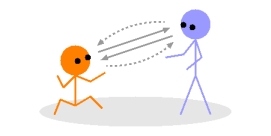
- Three to nine months of age
The caregiver interprets the child's mental states, such as desire and pleasure/displeasure, to which the caregiver responds actively. Although it is still asymmetric, their interaction seems socially meaningful. The child then gradually becomes able to predict the caregiver's behavior, which makes the interaction more symmetric.
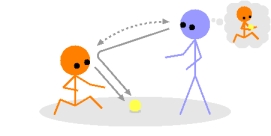
- Over nine months of age
Joint attention, i.e. an activity in which both look at the same target, emerges in the child-caregiver interactions. With the help of gaze and/or pointing, they share the perceptive information from the target, refer to each other's actions directed at the target (including vocalization and facial expressions) and thus share the meaning or value of the target.
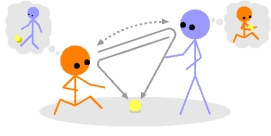
Through the development of child-caregiver interaction during the first year of life, the child and caregiver establish the basis for empathetic understanding of each other's mental states. Afterwards, the child starts learning various social skills like language use, tool use, and cultural conventions.
Eye-contact and joint attention are fundamental activities to maintain the child-caregiver interaction. Accordingly, a child and caregiver spatially and temporally correlate their attention and emotions, in which they refer to each other's subjective feelings of pleasure, surprise, and frustration. We believe all communication emerges from this mutual reference.
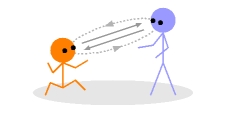
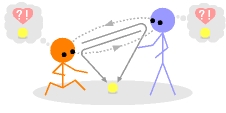
Eye-contact is the joint action of two individuals looking into each other's faces, especially the eyes. It functions not only for monitoring each other's gaze and facial expressions, but also for synchronizing interactions and for establishing a mutual acknowledgment, such as "My partner is aware of me" and "My partner is aware that I am aware of her".
Joint attention is the joint action of looking at the same target with the partner by means of gaze and/or pointing. First, the caregiver actively follows and guides the child's attention so that the child can easily capture the target; then the child gradually becomes able to follow and guide the partner's attention. Joint attention provides the interactants not only with the shared perceptive information, but also with spatial focus on their interaction, thus making the mutual acknowledgment, such as "I and my partner are aware of the same target" and "So, each other's actions (such as vocalization and facial expressions) are about the target".
